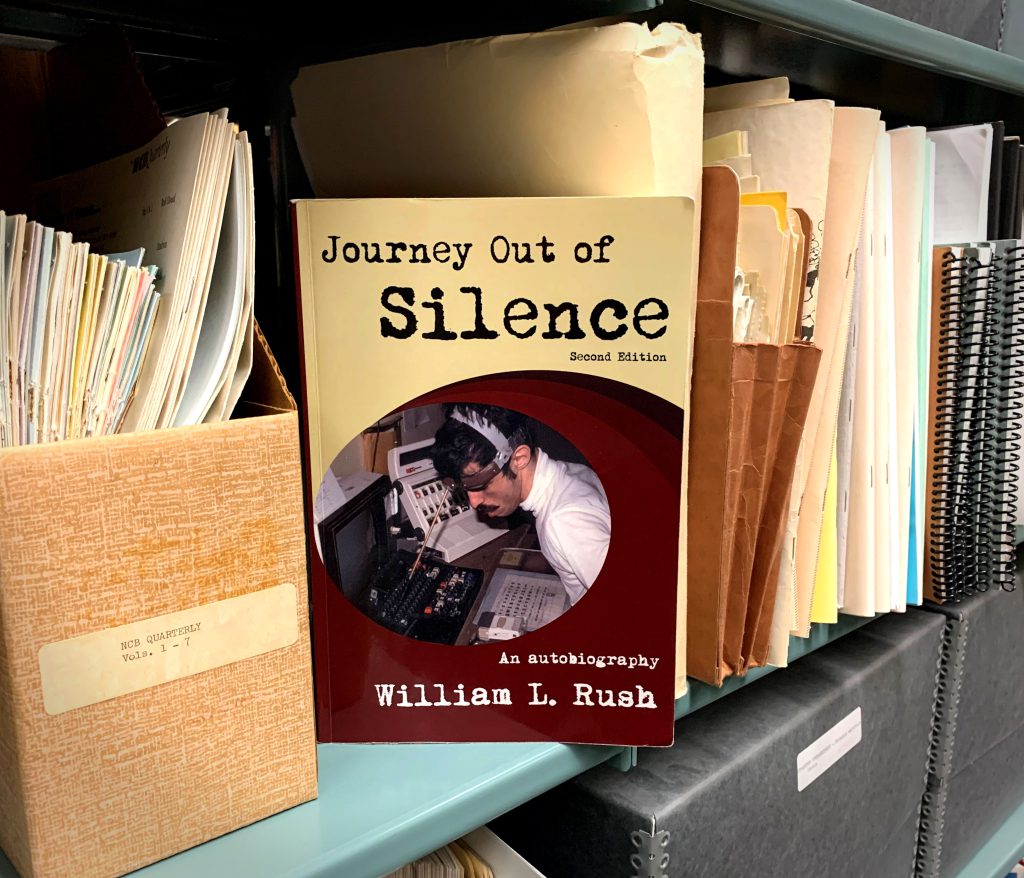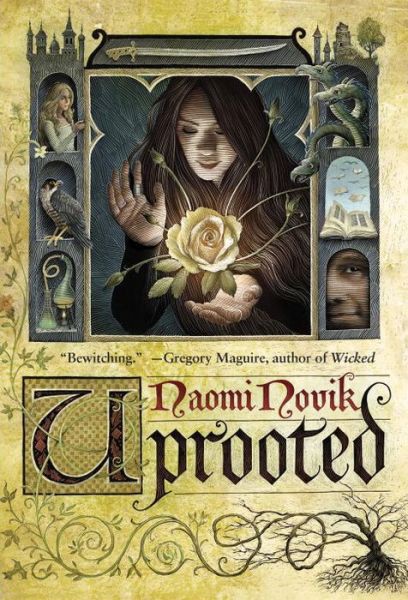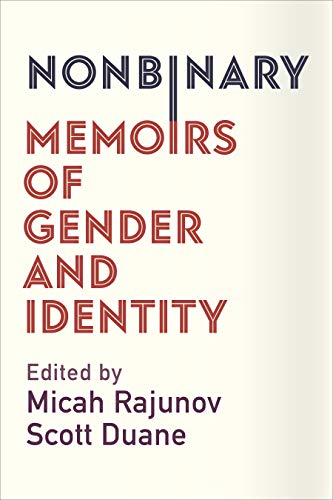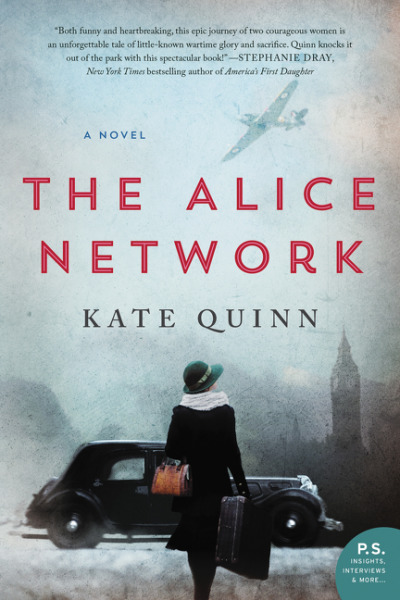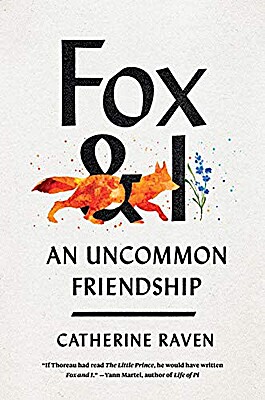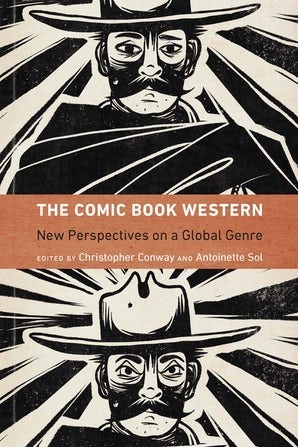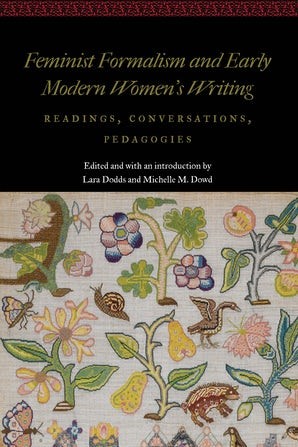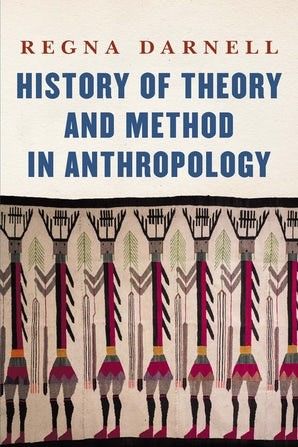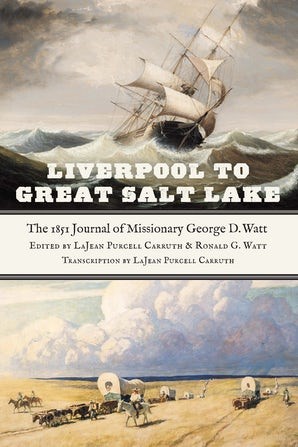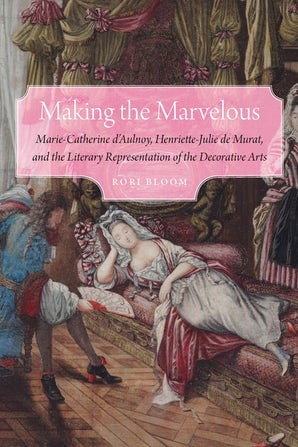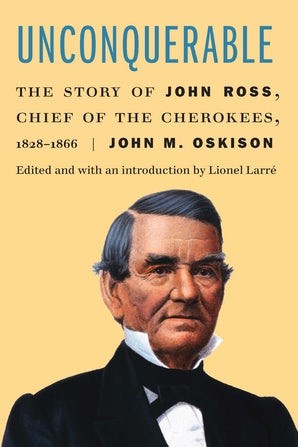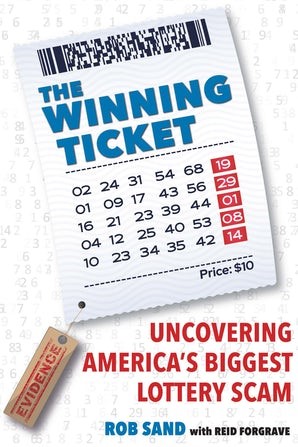Search the Blog
Categories
- Books & Reading
- Broadband Buzz
- Census
- Education & Training
- Friday Reads
- General
- Grants
- Information Resources
- Library Management
- Nebraska Center for the Book
- Nebraska Libraries on the Web
- Nebraska Memories
- Now hiring @ your library
- Preservation
- Pretty Sweet Tech
- Programming
- Public Library Boards of Trustees
- Public Relations
- Talking Book & Braille Service (TBBS)
- Technology
- Uncategorized
- What's Up Doc / Govdocs
- Youth Services
Archives
Subscribe
Category Archives: Books & Reading
Friday Reads: Upstream by Mary Oliver
In this universe we are given two gifts: the ability to love, and the ability to ask questions.
“The Bright Eyes of Eleonora: Poe’s Dream of Recapturing the Impossible,” Upstream, 91.
Mary Oliver is a dear friend of mine.
I do not mean, of course, that I have met her — or that I shall ever meet her (what a strange journey that should be!). But her words — her poems, her essays — sink deep into the blood-marrow of my bones, and I recognize on some thrum of instinct, kin. This is also not to say that ours is a kinship of talent; I shall not match Mary in writing (I think that she would say I would be a very poor writer, to only follow the paths she wandered).
Upstream, published in 2016, three years before her death, is a collection of essays, the central conceit of all being nature and literature. I do not mean nature and literature in the way one, who might need to restock their pantry, might list bread, and then list cheese. It is bread and cheese, meant to be together, and one without the other would render the entire trip moot, for naught. It is the same way that Mary’s essays are about nature and literature. You simply cannot, she says, have one without the other.
And what is the point of all this? — if one dares to ask a question. I set out to say that Upstream is a wonderful book on which to meditate — her collected work of poetry is like a Bible to me — but in re-reading the essay “Some Thoughts on Whitman,” I was struck by Mary’s line that “[Whitman’s methods were] to move the reader toward response rather than reflection” (94). Which is, of course, to say that Mary — a devotee of Whitman; I can think of no better word — has an intent to move us, the reader, to response! The hum through these pages is not to simply read this book, but to do so in public, out of doors, whooping in jubilation!
In Upstream, the reader journeys through Five Parts of the collection; the two opening sections are crafted around nature, as are the two closing sections. Part Three seems to be the odd duckling out — it is about literature, and if one does not find amusement in literary criticism, this Part may cause the reader to drag their heels. (I myself skimmed through the essay on Poe.) But, turning that eye back on Mary, one can view the construction of the book in its entire around Part Three; it is why the conceit is nature and literature. Upstream would have made a very fine collection if it were solely about nature, just as one can eat bread without a companion; likewise, Mary’s intellect, wit, and spirit of play in her literary criticisms would stand very well on its own, as one can enjoy cheese without any vehicle. Putting the two together is fantastic; each whole part amplifies the whole, exquisitely, and entirely filling.
In all of its total, Upstream is a short book and can take only an afternoon to read. It is inspiring, in the way that means that it will put the breath in you. Whether the energy of that breath is to write, to create, to dance — all very well. But more so than that I think that, after you close the final page, you would find yourself taking your hat off of its hook and setting out the door for a very long walk.
“Come with me into the field of sunflowers is a better line than anything you will find here,” Mary tells me at the beginning of the book from where she is, already waiting at the ending. “The sunflowers themselves far more wonderful than any words about them.”
Oliver, Mary. Upstream: Selected Essays. Penguin Books, 2019.
#BookFaceFriday “Half a Chance” by Cynthia Lord
Whatever floats your #BookFaceFriday! 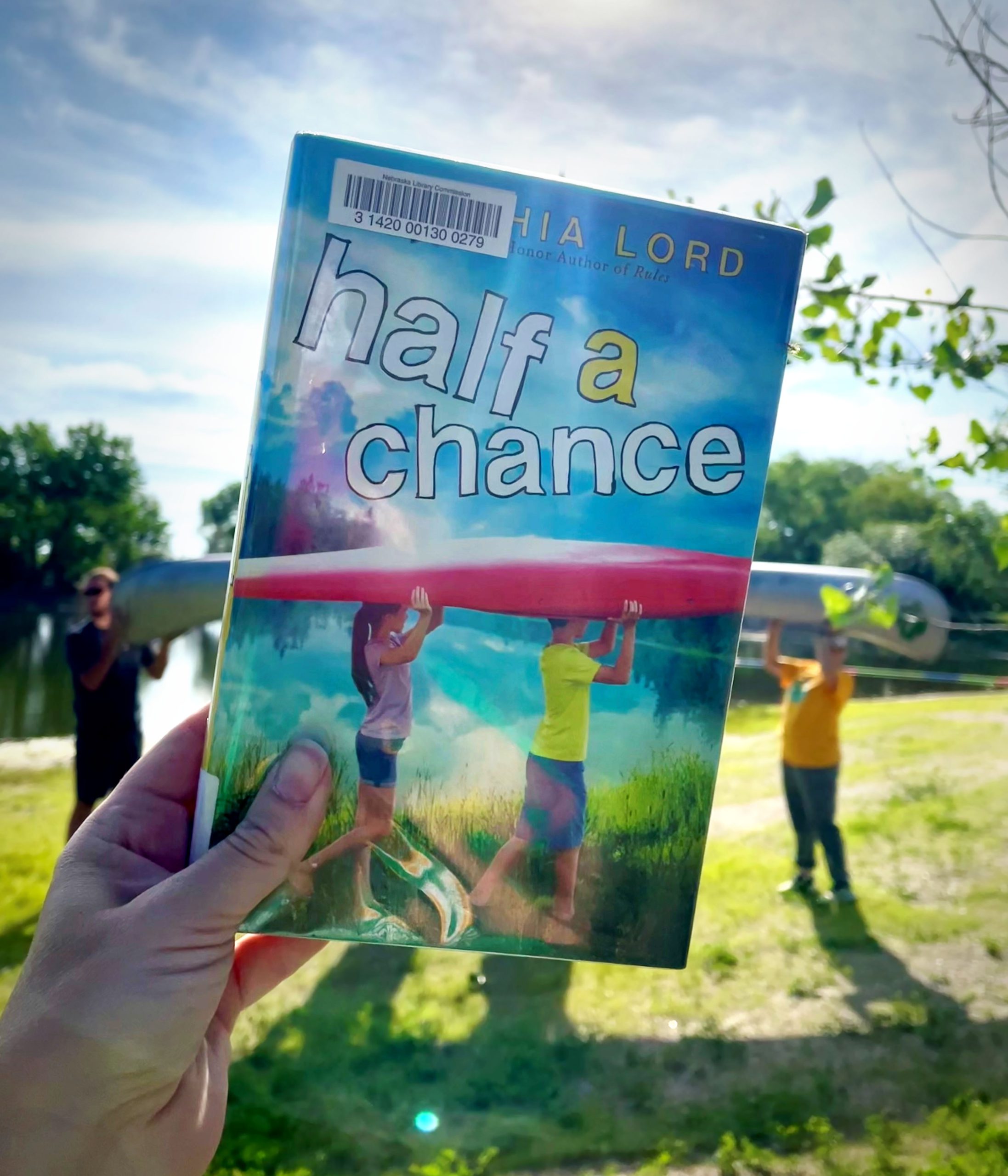
The summer camp vibes are strong with this week’s #BookFace! Take a break from the lake with “Half a Chance” by Cynthia Lord (Scholastic Press, 2016,) available in the NLC Book Club collection. Summer Reading Programs and book lists are the perfect opportunity to start some kid’s book clubs! Book clubs are a great way to fight the summer slide, encourage critical thinking, and developing social skills, not to mention another way to foster a child’s love of reading. This is your reminder that NLC’s Book Club Kits Collection is not just for adults. We have a huge collection of young adult titles that are perfect for fostering discussion.
— School Library Journal
Book Club Kits Rules for Use
- These kits can be checked out by the librarians of Nebraska libraries and media centers.
- Circulation times are flexible and will be based upon availability. There is no standard check-out time for book club kits.
- Please search the collection to select items you wish to borrow and use the REQUEST THIS KIT icon to borrow items.
- Contact the Information Desk at the Library Commission if you have any questions: by phone: 800/307-2665, or by email: Information Services Team
Love this #BookFace & reading? Check out our past #BookFaceFriday photos on the Nebraska Library Commission’s Facebook page!
Posted in Books & Reading, General, Youth Services
Tagged Book Club, Book Club Kits, Book Covers, bookface, bookfacefriday, books, Cynthia Lord, Kid Lit, Summer Reading, Young Adult
Leave a comment
Book Club Spotlight – How to Be an Antiracist
Welcome to the first Book Club Spotlight of June! With Juneteenth this month, I thought we’d start by highlighting How to Be an Antiracist by Dr. Ibram X. Kendi. Dr. Kendi is a historian, and the founding director of the Center for Antiracist Research at Boston University. Having spent 45 weeks on The New York Times Best Seller List, and named one of Time’s “must-read” books, How to Be an Antiracist now has two companion books: Antiracist Baby, and Be Antiracist.
Using a memoir approach, How to Be an Antiracist follows Dr. Kendi through his formative years, experiencing racism as a Black man and acting upon it himself. The narrative works as a starting point for those new to the antiracist ideology by examining ethics, intersectionality, and the history of racism/race from a first-person perspective. How to Be an Antiracist encourages its readers not just to be opposed to racism but to see how it affects every aspect of our lives and to challenge it.
“What a powerful construction race is—powerful enough to consume us. And it comes for us early.”
Ibram X. Kendi
Being only the second year that Juneteenth has been recognized as a federal holiday, discussions of race might be on your book club members’ minds. I’d recommend this for adult book groups who don’t know where to start in their discussion of race or just want to learn more about the racial system in America. Dr. Kendi leads the reader through difficult terrain in a manner accessible to the layman and ripe for discussion. His guided journal, Be Antiracist, can also help facilitate discussion amongst your members with questions such as: “Who or what scares you the most when you think about race?” and “What constitutes an American to you?”
If you’re interested in reserving this title for your book club, you can find the Book Club Kit Request Form here.
To see more of our Black Voices collection, visit the link here.
Kendi, Ibram X. How to Be an Antiracist. New York, NY: One World, 2019.
Posted in Books & Reading
Tagged Black Voices, Book Club, book club spotlight, books, Reading
Leave a comment
Friday Reads: Uprooted by Naomi Novik
Uprooted by Naomi Novik is a high fantasy with a romance (not a typical one), set in an area much like Poland (where there is magic.) No elves. Knights, wizards and witches (female wizards), armies, serfs, noblemen, nations at uneasy peace, and a magical wood. Doesn’t sound that bad, does it? But the magical wood takes people, changes them, and makes them monsters that contaminate others, and kill in gruesome ways both humans and animals. This is the world Agniesszka lives in, near a village, in a valley near the Wood. Keeping the Wood contained is a wizard called the Dragon, who takes a girl from the villages every 10 years, to live with him in his tower. Agniesszka, and her village believe her friend Kasia will be chosen, because she’s beautiful, friendly, and talented. Agnieszka can get dirty just walking to the cart to go to the village. She can also find fruit out of season in the forest; she finds the most nuts gleaning in the forest. But never goes into the Wood. The girls chosen by the dragon return to their villages, but never stay. Often they go to the city and the university. They come away from the 10 years with the Dragon different, even though they protest he never touches them.
So, when the time comes, it is Agniesszka who is chosen. She doesn’t realize it, but she herself has magical abilities, and it is against the law to let the magically talented to go untrained. It takes her some time to understand that it’s her own power, and not the dragon’s, powering the spells he makes her say. The Dragon is a young looking man, who is cold, distant, and irritable. (Living 100 years battling an evil Wood might do that….) That makes the entire learning process harder, of course, but eventually she yells back at him, and they both learn a way of doing magic together. There is the usual, accepted, structured magical practices, and then a sort of organic, one once practiced by a famous witch with a name very similar to Babba Yagga. Agniesszka is attuned to this type of magic. Her skill gleaning, and the way branches reach out to her in the forest are signs of it. Although this tale isn’t heavy on romance, with hearts and flowers and speeches, it is there.
The story highlights the strong female friendship between Kasia and Agniesszka, and the developing relationship with the Dragon. The loss of the younger Prince’s mother to the Wood twenty years ago grows into a conflict with the Wood itself. Which is also about a love story, a loss, and a betrayal. But you’ll have to read it to find out how that happens, and how the Dragon and Agniesszka deal with it all.
A very interesting, unpredictable story, with the characters it is based on, a girl and her wandering yellow cow, (the Polish folk tale that inspires this story) near the end.
I loved this book. It is a stand alone, from Naomi Novik known for her Temeraire series. There is another title that is also set in this world, called Spinning Silver that I’m looking forward to reading.
Uprooted, by Naomi Novik, trade paperback.
Posted in Books & Reading
Tagged based on folktale, Friday Reads, High Fantasy, Naomi Novik
Leave a comment
#BookFaceFriday “My Ocean is Blue” by Darren Lebeuf
It’s an ocean of possibilities with #BookFaceFriday!
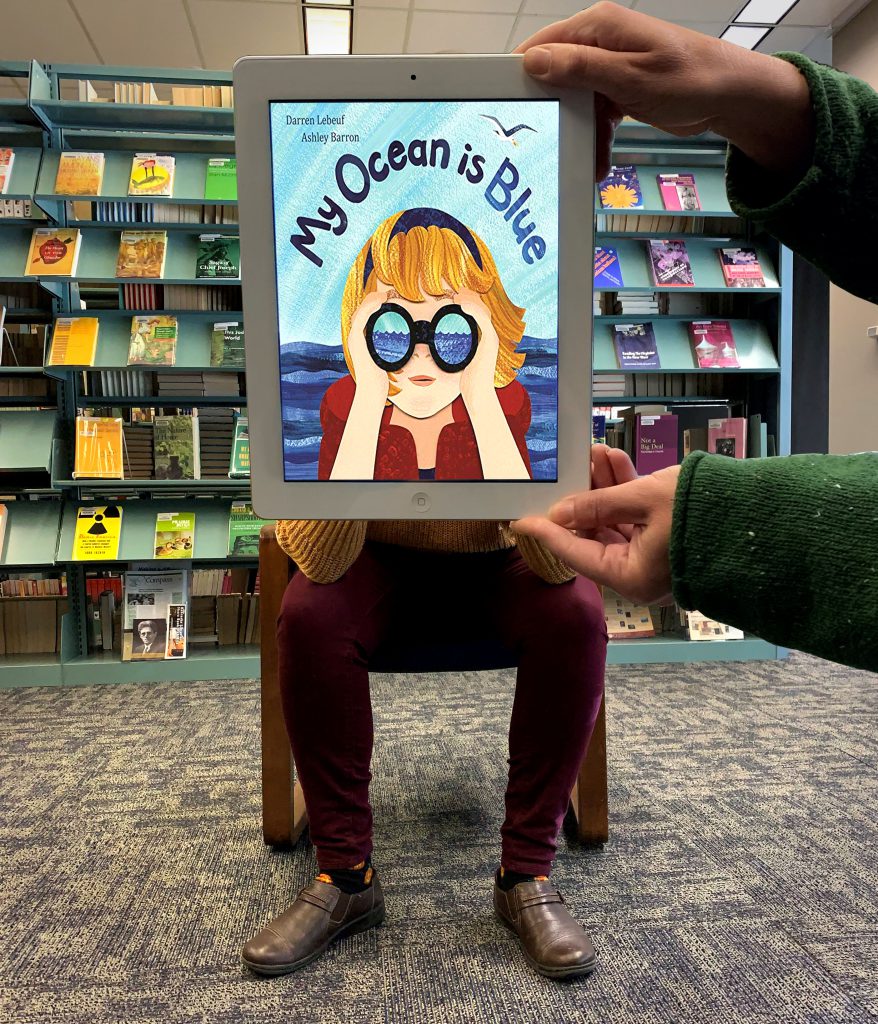
School is out, and that means Summer Reading Programs all over the state are gearing up. So we’re diving in with this #BookFace, “My Ocean is Blue” written by Darren Lebeuf and illustrated by Ashley Barron (Kids Can Press, 2020.) It’s a part of the”Oceans of Possibilities” collection in Nebraska OverDrive Libraries Kids & Teens, a list of titles specially curated for the 2022 Summer Reading Program. It’s available for check out as an eBook, along with the 285 other titles in the collection. “My Ocean is Blue” is also on the Nebraska Library Commission 2022 SRP Book List, created by Sally Snyder, our Coordinator of Children and Young Adult Library Services.
“My Ocean is Blue … strikes just the right note as Lebeuf and Barron share a day at the seaside through a poetic text that is beautifully mirrored by exquisite watercolour, pencil crayon and collage illustrations.”
– The Globe and Mail
Find this title and many more through Nebraska OverDrive! Libraries participating in the Nebraska OverDrive Libraries Group currently have access to a shared and growing collection of digital downloadable audiobooks and eBooks. 188 libraries across the state share the Nebraska OverDrive collection of 21,696 audiobooks, 35,200 eBooks, and 3,964 magazines. As an added bonus it includes 130 podcasts that are always available with simultaneous use (SU), as well as SU ebooks and audiobook titles that publishers have made available for a limited time. If you’re a part of it, let your users know about this great title, and if you’re not a member yet, find more information about participating in Nebraska Overdrive Libraries!
Love this #BookFace & reading? Check out our past #BookFaceFriday photos on the Nebraska Library Commission’s Facebook page!
Posted in Books & Reading, General, Youth Services
Tagged bookfacefriday, ebooks, Kids, libraries, Nebraska OverDrive Libraries, Reading, Summer Reading
Leave a comment
#BookFaceFriday “Keeping Faith” by Jodi Picoult
Keep your hat on ‘its #BookFaceFriday! 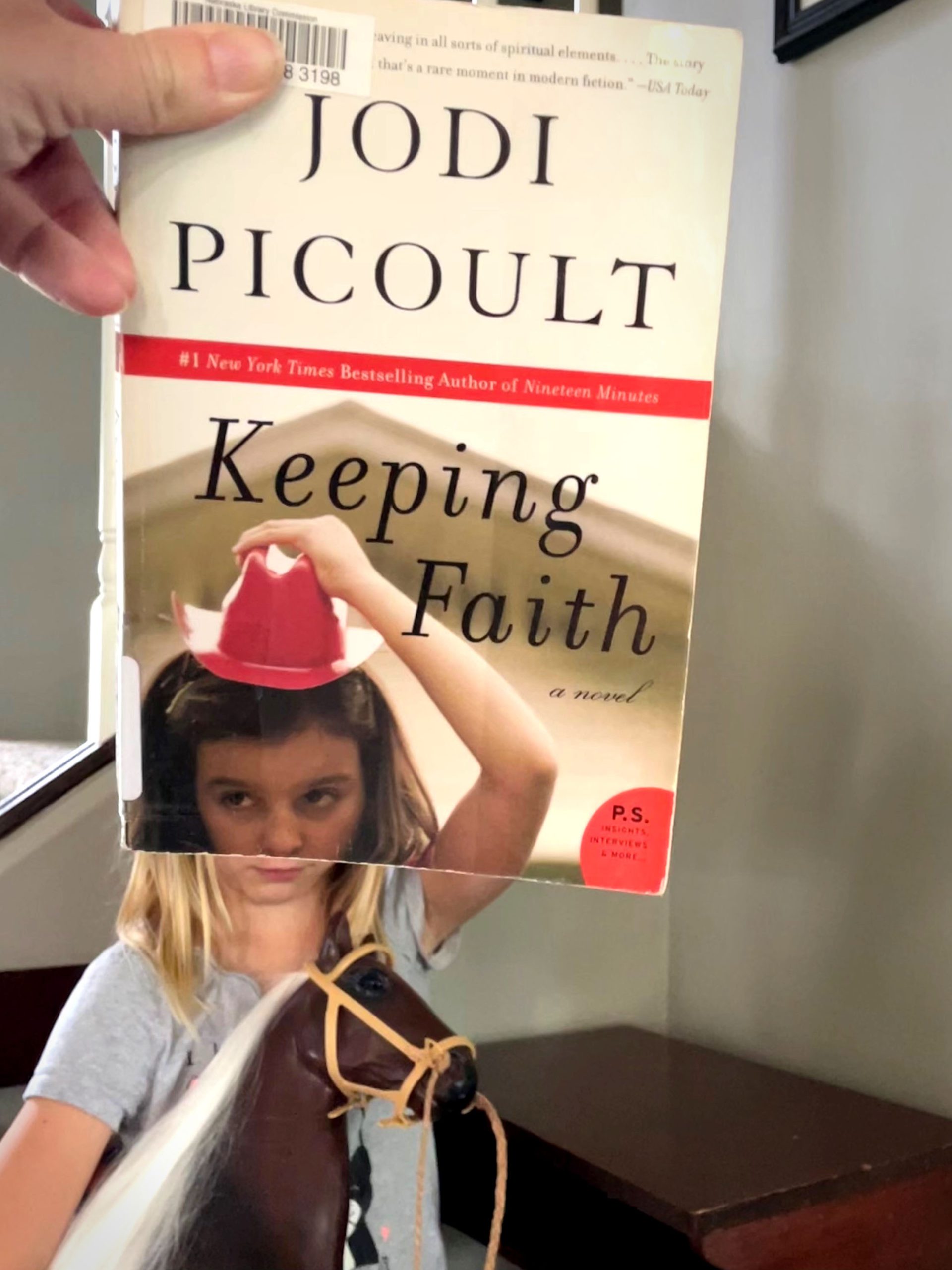
Some authors are just perfect for book club discussions and #BookFace! With subjects and characters that keep the conversation flowing check out “Keeping Faith: A Novel” by Jodi Picoult (William Morrow, 2006,) available in the NLC Book Club collection. We have twenty, say that again, TWENTY Jodi Picoult titles in our Book Club Kit Collection! If that’s not enough for you, there are even more Picoult books available in the Nebraska OverDrive Libraries collection, both in eBook and Audiobook format.
Keeping Faith is a raging success. . . . A triumph. This novel’s haunting strength will hold the reader until the very end and make Faith and her story impossible to forget.
Book Club Kits Rules for Use
- These kits can be checked out by the librarians of Nebraska libraries and media centers.
- Circulation times are flexible and will be based upon availability. There is no standard check-out time for book club kits.
- Please search the collection to select items you wish to borrow and use the REQUEST THIS KIT icon to borrow items.
- Contact the Information Desk at the Library Commission if you have any questions: by phone: 800/307-2665, or by email: Information Services Team
Love this #BookFace & reading? Check out our past #BookFaceFriday photos on the Nebraska Library Commission’s Facebook page!
Posted in Books & Reading, General
Tagged Book Club, Book Club Kits, Book Covers, bookface, bookfacefriday, books, Jodi Picoult, Keeping Faith, Novel, OverDrive
Leave a comment
Friday Reads: Nonbinary: Memoirs of a Gender and Identity
I found myself talking about all-girls code clubs in an NCompass Live presentation earlier this week. Mid-sentence, I remembered an episode of the Queer Eye where a trans girl was trying to find groups in school that fit her identity. As I recalled her troubled face, I ended the sentence to include people who identify as girls. I tried to limit the verbal word vomit as I struggled to find the right words to describe people who don’t identify as male or female.
That night, I went on Hoopla and checked out the audiobook for Nonbinary: Memoirs of Gender and Identity by Micah Rajunov, hoping to find the right words. Plus, it’s almost Pride Month, so it might be a good book to help people understand a changing world. The nonbinary narratives in this book give a voice to those who do not fit neatly into the gender categories of male or female. As with any large group of people, one collection of stories can never represent an entire subset of the population. Each individual defines themselves.
Honestly, I find it difficult to neatly define what nonbinary means when the nonbinary population is still trying to define themselves, and struggling for acceptance in the world. Before reading this book, I knew that some nonbinary people used the they/them pronoun instead of she/he. Several years ago, I met them in a writing group and heard their story. Yes, you read that sentence right.
To this day, I still hear my grammar school teacher saying on repeat: ‘They’ are a group of people. She is an individual. He is an individual. We had to practice proper pronoun use around the room. Now, I still have to override the grammar side of my brain to be inclusive to all genders. So, I met them in a writing group. Just one person out of many people I met in that group.
I heard their story in that group, and now I have read the memoirs in this book. I learned from a man who finally gained the courage to transition to a female after fifty years. A trans advocate revealed the struggle of the trans nation. I added new words to my vocabulary: femme, gender rebel, genderqueer, nonbinary. These words are not my own, so I can’t help but pronounce them as though practicing a foreign language. The words are not wrong, just new. My voice tilts up at the end, as though asking if I got it right. Femme? Genderqueer? They’re never there to answer. This book gave them a voice and helped me find better words.
Stories are how we come to understand ourselves and the world. Sometimes we find a piece of ourselves we never knew was missing. New ideas give deep-seated, intangible feelings a name. Naming an enemy gives us power to stand strong in the face of adversity. Like Rumplestiltskin. I read and wondered how many people saw ‘nonbinary’ and found peace after decades of mental anguish. Personally, I would prefer them to be nonbinary rather than depressed or suicidal.
So next time I talk about a Girls Who Code club, I will say that they are welcome. Anyone who wants them to feel safe and included is welcome. Anyone who wants to degrade them and make them feel insecure, unsafe, and less than human can see themselves out. Maybe not forever, just long enough to process. We are all human. Read their story, then we can all learn together.
Rajunov, Micah, and Scott Duane, editors. Nonbinary: Memoirs of Gender and Identity. Columbia University Press, 2019.
Book Club Spotlight – The Ghost Bride

For our last spotlight of Asian American & Pacific Islander month, I thought I’d bring a brand new addition to our Book Club Collection; The Ghost Bride by Yangsze Choo. Choo is a fourth-generation Malaysian of Chinese descent currently living in California, and her most recent novel, The Night Tiger, is a NYT bestseller and a Reese’s Book Club pick.
The Ghost Bride takes place in 1890s Malaya (now Malaysia), where people of all backgrounds intermingled under British rule. The Chinese population work to hold onto their ancient traditions, especially those involving death. According to these traditions, unpleased spirits, or those who had no death rites performed, linger in our world and can cause trouble for the living. When their son dies, the wealthy and powerful Lim family look to Lin Lan to placate his soul by asking her to be Lim Tian’s bride in a rare ghost marriage. Unfortunately for Li Lan, ghosts are real, and she must travel through the Chinese afterlife to rid herself of her specter and this marriage.
“It seemed to me that in this confluence of cultures we had acquired one another’s superstitions without necessarily any of their comforts”
Yangsze Choo
Perfect for a YA or an adult book club, the Ghost Bride is a coming-of-age novel that melds a murder mystery, historical fiction, fantasy, and a bit of supernatural romance. Throughout the story, readers learn about ancient Chinese traditions, how influences of the West changed their society, and the never ending bureaucracy of the afterlife. With the aid of the Notes section, readers can learn even more about the history of ghost marriages, Chinese notions of the afterlife, and other historical notes of life in Chinese in Southeast Asia. It was also recently adapted into a Malaysian-language Netflix series which looks incredible, and I will absolutely have to binge the it this weekend.
If you’re interested in requesting this book for your book club, you can find the Book Club Kit Request Form here.
To see more of our Asian American/ Pacific Islander Book Club Kits, visit the link here.
Posted in Books & Reading
Tagged AAPI, Book Club, book club spotlight, Fantasy, Historical Fiction, Supernatural
Leave a comment
Friday Reads: The Alice Network, by Kate Quinn
“The first person I met in England was a hallucination.”
When a book starts with a sentence like that, you know it will be interesting, at the very least. First published in 2017, and still going strong today with over a million copies in print and multiple holds on the e-book and audiobook versions in Overdrive. Of course, being chosen for Reese Witherspoon’s book club helped, but in my opinion, “The Alice Network” by Kate Quinn is worth all the hype and so much more than just interesting.
“The Alice Network” follows people “chasing… (the) legacies left by lost women in past wars”. Told from the alternating perspectives of “Charlie”, a young woman wanting answers about her cousin who went missing during the ravages of World War II, and Eve, now of middle age but who spent World War I as a young spy in German-occupied France.
Based on real lives and events, “The Alice Network” is all at once a romance, thriller, mystery, historical fiction, and a work of social commentary. Engrossing and touching, I highly recommend this book and cannot wait to get my hands on Kate Quinn’s “The Diamond Eye”, a story about a librarian turned sniper in World War II.
Quinn, K. (2022). The Alice network: a novel. William Morrow, an imprint of HarperCollins Publishers.
#BookFaceFriday “Daisy Jones & the Six” by Taylor Jenkins Reid
It’s all happening with #BookFaceFriday!

Rattan furniture, curtain bangs, there’s no denying it, the 70s are making a comeback. So we’re diving into the era’s music scene with this #BookFaceFriday! “Daisy Jones & the Six: A Novel” by Taylor Jenkins Reid (Random House Publishing Group, 2020) is available for check out in our Book Club Kit Collection. You can also find it as an eBook and an Audiobook in Nebraska OverDrive Libraries. Taylor Jenkins Reid is a New York Times bestselling author, you can find four other Reid titles in our OverDrive collection, including, “The Seven Husbands of Evelyn Hugo,” “Malibu Rising,” and “Maybe in Another Life.”
“Reid’s novel so resembles a memoir of a real band and conjures such true-to-life images of the seventies music scene that readers will think they’re listening to Fleetwood Mac or Led Zeppelin. Reid is unsurpassed in her ability to create complex characters working through emotions that will make your toes curl.”
– Booklist (starred review)
Book Club Kits Rules for Use
- These kits can be checked out by the librarians of Nebraska libraries and media centers.
- Circulation times are flexible and will be based upon availability. There is no standard check-out time for book club kits.
- Please search the collection to select items you wish to borrow and use the REQUEST THIS KIT icon to borrow items.
- Contact the Information Desk at the Library Commission if you have any questions: by phone: 800/307-2665, or by email: Information Services Team
Find this title and many more through Nebraska OverDrive! Libraries participating in the Nebraska OverDrive Libraries Group currently have access to a shared and growing collection of digital downloadable audiobooks and eBooks. 188 libraries across the state share the Nebraska OverDrive collection of 21,696 audiobooks, 35,200 eBooks, and 3,964 magazines. As an added bonus it includes 130 podcasts that are always available with simultaneous use (SU), as well as SU ebooks and audiobook titles that publishers have made available for a limited time. If you’re a part of it, let your users know about this great title, and if you’re not a member yet, find more information about participating in Nebraska Overdrive Libraries!
Love this #BookFace & reading? Check out our past #BookFaceFriday photos on the Nebraska Library Commission’s Facebook page!
#BookFaceFriday – “Millennial Cervantes” by Bruce R. Burningham
We’re tilting at windmills with this week’s #BookFaceFriday.
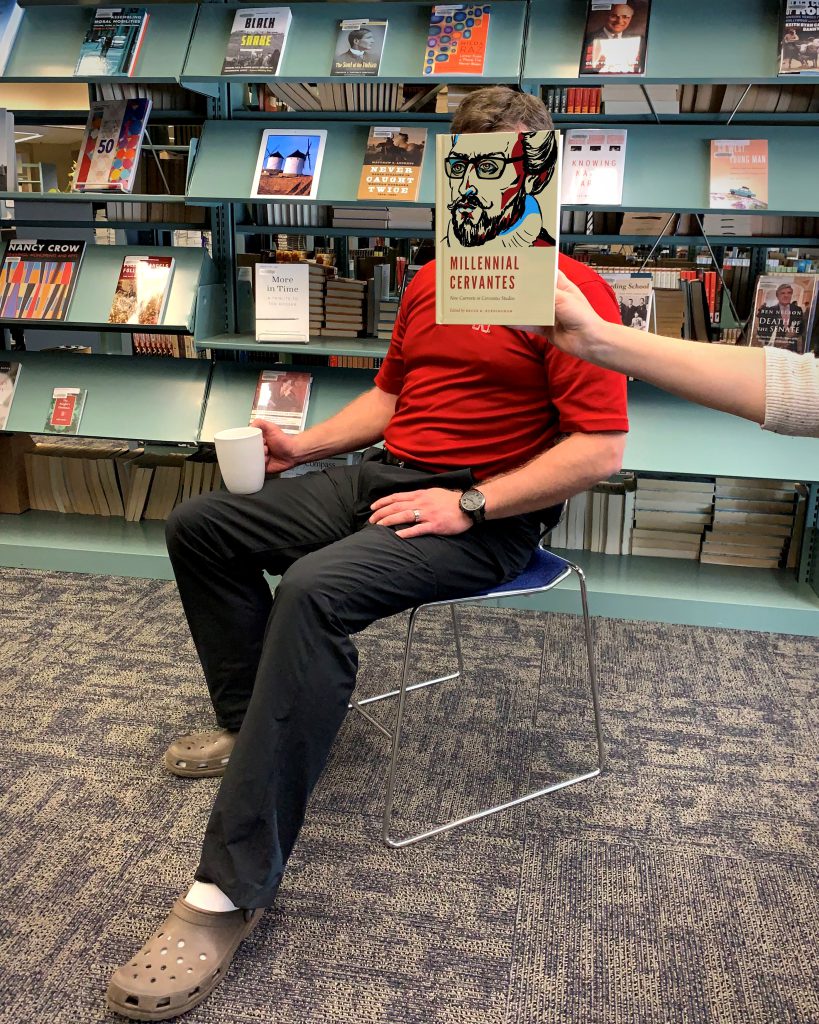
Go on an adventure with this week’s #BookFaceFriday, “Millennial Cervantes: New Currents in Cervantes Studies (New Hispanisms)” edited by Bruce R. Burningham (University of Nebraska Press; Illustrated Edition, 2020.) The Nebraska Library Commission’s Collection is always growing, the Nebraska Publications Clearinghouse receives documents every month from all Nebraska state agencies, including the University of Nebraska Press (UNP). UNP books, as well as all Nebraska state documents, are available for checkout by libraries and librarians for their patrons.
“Millennial Cervantes explores some of the most important recent trends in Cervantes scholarship in the twenty-first century. It brings together leading Cervantes scholars of the United States in order to showcase their cutting-edge work within a cultural studies frame that encompasses everything from ekphrasis to philosophy, from sexuality to Cold War political satire, and from the culinary arts to the digital humanities.”
—Book jacket
“This collection of nine provocative, beautifully elaborated essays explores the impact of Cervantes’s writings in their own time and place, and well beyond.”
—E. H. Friedman, Choice
Love this #BookFace & reading? Check out our past #BookFaceFriday photos on the Nebraska Library Commission’s Facebook page!
Friday Reads: Fox & I: An Uncommon Friendship, by Catherine Raven
This book was a nice respite. It didn’t tackle a contentious political or social issue, nor did it build a fictional world fraught with challenges and interpersonal drama. Instead, it was a quiet meditation, shared by a purposefully solitary individual. The drama that did make it onto the pages was that of the natural world—ebbing, flowing, occasionally bloody, though not in a “man’s inhumanity to man” kind of way—and of metaphysical ruminations on the relationship between humans and nature, science and intuition.
Author Catherine Raven doesn’t share an in-depth backstory, but offers enough details that we know she’s been on her own for years. She left an unhappy home at fifteen, started college at sixteen, spent years as a backcountry ranger for the National Park Service, and eventually earned a PhD in biology. At the start of Fox & I she is living in a cottage on a small plot of land in Montana, miles from civilization.
Although Raven has some interaction with people—she teaches online classes and the occasional in-person field class—their presence is peripheral. The central characters of her narrative are the living things she shares space with—Gin and Tonic, two nearby juniper trees; Tennis Ball and Torn Tail, the two magpies she can distinguish from the rest; the voles inhabiting her pasture; and, most significantly, a fox (whom she calls Fox) that comes visiting every day at 4:15.
At first Raven, trained as a scientist, feels self-conscious about her relationship with Fox. She worries about anthropomorphizing him, and feels professional pressure to turn him into a research subject capable of yielding data points. As time passes, though, she becomes more comfortable with their companionable coexistence, which she acknowledges as friendship.
One of my favorite things about this book is Raven’s frequent invocation of world-weary Ishmael, narrator of Herman Melville’s Moby Dick, and Antoine de Saint-Exupery, author of The Little Prince (the book she reads aloud to Fox during his visits). By linking her own introspection about the nature of existence to theirs, she connects herself to a literary tradition in which plot is a convenient excuse to wrestle with the bigger, existential questions of life. If this is the sort of narrative you need right now, you’ll appreciate Fox & I.
Raven, Catherine. Fox & I: An Uncommon Friendship. New York: Spiegel & Grau, 2021.
Book Club Spotlight – The Henna Artist

In order to kick off Asian American & Pacific Islander month, I thought I’d spotlight The Henna Artist, written by Indian immigrant Alka Joshi. This story enraptured me completely, which is in no small part thanks to the incredible audiobook narrator, Sneha Mathan.
The Henna Artist, set in 1950’s Jaipur, India, is a story of run-away Lakshmi who fled her abusive marriage and is now a henna artist to the upper class. While she paints the ladies’ hands, she provides herbal remedies to both the men and women she services. Suddenly finding herself in charge of a 13-year-old sister she never knew she had, the life she worked so hard for comes to a crashing halt. Lakshmi’s story is fiction, but her perseverance, love for her family, and her culture’s art and medicine are far from the realm of fantasy. Here, Joshi presents a reimagining of what her mother’s life could have been if she had been given the opportunity to shape her own destiny.
_________
“She was brought up to obey her parents and her husband, not to defy, question or contradict. She told me Pitaji’s books had filled my head with too many silly ideas. They had given me the useless notion that I could make my own decisions.”
Alka Joshi
No stranger to book clubs, this title was featured in Reese Witherspoon’s book club at its debut in 2020. Always an evergreen topic, body autonomy is at the heart of this novel, as well as a diverse and colorful portrait of Indian culture. This book is perfect for adults, and vivacious young adults who are ready to face these conversations head-on and talk about their own experiences and viewpoints.
If you’re worried about your knowledge of India going into this book, do not fret! Our copies at the commission all include a list of characters, a glossary of terms, information about the Caste System in India, the history of and recipe for Henna, and some food recipes! Or all of that information is available here.
If you’re interested in reading this book for your own book club, you can find the Book Club Kit Request Form here.
Joshi, Alka. The Henna Artist. Mira. 2020
Posted in Books & Reading
Tagged AAPI, Book Club, Book Club Kits, book club spotlight, Diverse Books
Leave a comment
What’s Up Doc? New State Agency Publications at the Nebraska Library Commission
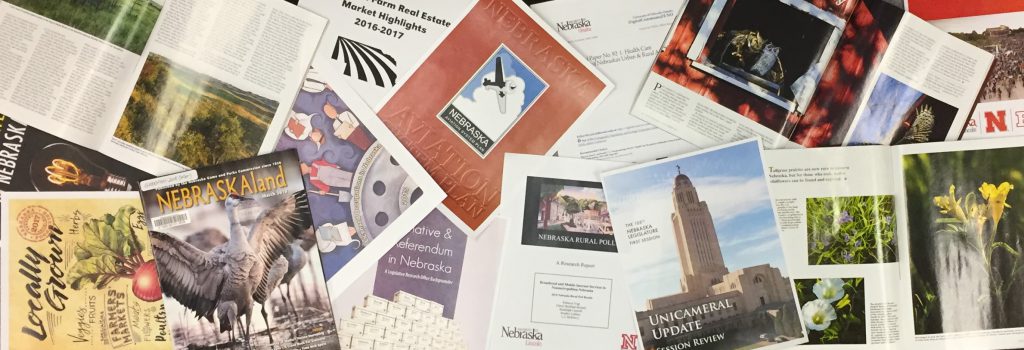
New state agency publications have been received at the Nebraska Library Commission for April 2022. Included are reports from the Nebraska Legislature, the Nebraska Department of Natural Resources, the Nebraska Department of Correctional Services, the Nebraska Department of Transportation, and new books from the University of Nebraska Press, to name a few.
Most items, except the books from the University of Nebraska Press, are available for immediate viewing and printing by clicking on the highlighted link above, or directly in the .pdf below. You can read synopses of the books received from the University of Nebraska Press in the Book Briefs blogposts.
The Nebraska Legislature created the Nebraska Publications Clearinghouse in 1972 as a service of the Nebraska Library Commission. Its purpose is to collect, preserve, and provide access to all public information published by Nebraska state agencies. By law (State Statutes 51-411 to 51-413) all Nebraska state agencies are required to submit their published documents to the Clearinghouse. For more information, visit the Nebraska Publications Clearinghouse page, contact Mary Sauers, Government Information Services Librarian; or contact Bonnie Henzel, State Documents Staff Assistant.
What’s Up Doc? 2021 State Agency Publications at the Nebraska Library Commission

State agency publications received at the Nebraska Library Commission for 2021 are listed below. Included are reports from the Nebraska Department of Agriculture, the Nebraska Department of Economic Development, the Nebraska Department of Education, the Nebraska Game & Parks Commission, and new books from the University of Nebraska Press, to name a few.
Most items, except the books from the University of Nebraska Press, are available for immediate viewing and printing by clicking on the highlighted link above, or directly in the .pdf below. You can read synopses of the books received from the University of Nebraska Press in the Book Briefs blogposts.
The Nebraska Legislature created the Nebraska Publications Clearinghouse in 1972 as a service of the Nebraska Library Commission. Its purpose is to collect, preserve, and provide access to all public information published by Nebraska state agencies. By law (State Statutes 51-411 to 51-413) all Nebraska state agencies are required to submit their published documents to the Clearinghouse. For more information, visit the Nebraska Publications Clearinghouse page, contact Mary Sauers, Government Information Services Librarian; or contact Bonnie Henzel, State Documents Staff Assistant.
#BookFaceFriday “At the Water’s Edge” by Sara Gruen
It’s raining #BookFaceFridays! 
We took advantage of yet another rainy day for this week’s #BookFaceFriday! “At the Water’s Edge” by Sara Gruen (Random House, 2015) is now available in the NLC Book Club collection! We just added this New York Times bestseller to our collection thanks to a donation from Bellevue Public Library! We love that book clubs around the state regularly donate their books so that more book clubs can read them. So we want to say a big THANK YOU to all those who have sent us donations! We have three of Sara Gruen’s titles in our Book Club Kit Collection, reserve one for your group’s next read!
Book Club Kits Rules for Use
- These kits can be checked out by the librarians of Nebraska libraries and media centers.
- Circulation times are flexible and will be based upon availability. There is no standard check-out time for book club kits.
- Please search the collection to select items you wish to borrow and use the REQUEST THIS KIT icon to borrow items.
- Contact the Information Desk at the Library Commission if you have any questions: by phone: 800/307-2665, or by email: Information Services Team
Love this #BookFace & reading? Check out our past #BookFaceFriday photos on the Nebraska Library Commission’s Facebook page!
Posted in Books & Reading, General
Tagged At the Water's Edge, Book Club, Book Club Kits, Book Covers, bookface, bookfacefriday, books, Sara Gruen
Leave a comment
Friday Reads: “Go Tell the Bees That I Am Gone” by Diana Gabaldon
I have been a huge fan of time travel fiction, historical fiction, and medical fiction for a very long time, and the Outlander series by Diana Gabaldon, tops my list of all three of these genres. The 9th book in the series, Go Tell the Bees That I Am Gone (2021), is her latest installment in this sweeping saga. I am also a huge fan of the Outlander TV series, currently having just concluded season 6, with each season roughly matching each book. Because it had been 8 years since the previous book, I went back and listened to books 6, 7, and 8–before diving into book 9. As always, it did not disappoint!
For those new to the series, Claire Beauchamp Randall, a WWII British Army nurse, falls through standing stones (similar to Stonehenge) in 1946, and lands in 1743 Scotland, where she meets Jamie Fraser, a twenty-something red-haired Scots warrior and laird. Claire, while trying to figure out how to get back to her own time and husband, is protected by Jamie, and they fall in love. Together they must survive clan wars, British Redcoats, injuries, starvation, and French intrigue as they come ever closer to Culloden–the Jacobite Rising battle that would determine the fate of Highlands culture and possibly the throne of Great Britain. Through all of these circumstances, Claire uses her medical knowledge to help any and all in need. Immediately before Culloden, Jamie sends Claire back through the stones to her own time–back to her husband Frank. For the next twenty years, Claire believes Jamie to be dead at Culloden, and not until Frank dies does she begin to suspect that Jamie might still be alive in the past. Eventually Claire and Jamie are reunited, and their adventures together in 18th century Scotland, the Caribbean, and the American Colonies are a great read. That brings us to Book 9–Go Tell the Bees That I Am Gone.
It is now 1779, and Claire and Jamie have been settled for awhile on Fraser’s Ridge, North Carolina, along with their daughter Brianna and her family, friends, and other refugees from Scotland. They have built a solid life–Jamie as a land owner, and Claire as a healer. Independence from Great Britain has been declared, but loyalties are split across all of the colonies, even on Fraser’s Ridge. As the Revolutionary War rages from New York to Georgia, Jamie and Claire need to once again stay closely bonded to survive–through war, fire, disease, injuries, death, and someone special from Jamie’s past. As always, a wonderful historical fiction saga with a great set up at the end for book 10. I can’t wait!
Posted in Books & Reading, General, Information Resources
Tagged books, Friday Reads, Reading
Leave a comment
Book Briefs: New University of Nebraska Press Books at the Nebraska Publications Clearinghouse
The Nebraska Publications Clearinghouse receives documents every month from all Nebraska state agencies, including the University of Nebraska Press (UNP). Each month we will be showcasing the UNP books that the Clearinghouse has received.
UNP books, as well as all Nebraska state documents, are available for checkout by libraries and librarians for their patrons.
Here are the UNP books the Clearinghouse received in April 2022:
The Comic Book Western : New Perspectives on a Global Genre, Edited by Christopher Conway and Antoinette Sol ; Series: Postwestern Horizons
One of the greatest untold stories about the globalization of the Western is the key role of comics. Few American cultural exports have been as successful globally as the Western, a phenomenon commonly attributed to the widespread circulation of fiction, film, and television. The Comic Book Western centers comics in the Western’s international success. Even as readers consumed translations of American comic book Westerns, they fell in love with local ones that became national or international sensations.
These essays reveal the unexpected cross-pollinations that allowed the Western to emerge from and speak to a wide range of historical and cultural contexts, including Spanish and Italian fascism, Polish historical memory, the ideology of shōjo manga from Japan, British post-apocalypticism and the gothic, race and identity in Canada, Mexican gender politics, French critiques of manifest destiny, and gaucho nationalism in Argentina. The vibrant themes uncovered in The Comic Book Western teach us that international comic book Westerns are not hollow imitations but complex and aesthetically powerful statements about identity, culture, and politics.
Feminist Formalism and Early Modern Women’s Writing. Edited and with an introduction by Lara Dodds and Michelle M. Dowd ; Series: Women and Gender in the Early Modern World
Feminist Formalism and Early Modern Women’s Writing reexamines the relationship between gender and form in early modern women’s writing in essays that elaborate the specific literary strategies of women writers, that examine women’s debts to and appropriations of different literary genres, and that offer practical suggestions for the teaching of women’s texts in several different contexts. Contributors explore the possibility of feminist formalism, a methodology that both attends to the structural, rhetorical, and other formal techniques of a given text and takes gender as a central category of analysis. This collection contends that feminist formalism is a useful tool for scholars of the early modern period and for literary studies more broadly because it marries the traditional questions of formalism—including questions of style, genre, and literary history—with the political and cultural concerns of feminist inquiry.
Contributors reposition works by important women writers—such as Margaret Cavendish, Hester Pulter, Mary Wroth, and Katherine Philips—as central to the development of English literary tradition. By examining a variety of texts written by women, including recipes, emblems, exchanges, and poetry, Feminist Formalism and Early Modern Women’s Writing contributes to existing scholarship on early modern women’s writing while extending it in new and important directions.
History of Theory and Method in Anthropology. By Regna Darnell ; Series: Critical Studies in the History of Anthropology
Regna Darnell offers a critical reexamination of the theoretical orientation of the Americanist tradition, centered on the work of Franz Boas, and the professionalization of anthropology as an academic discipline in the United States in the late nineteenth and early twentieth centuries. History of Theory and Method in Anthropology reveals the theory schools, institutions, and social networks of scholars and fieldworkers primarily interested in the ethnography of North American Indigenous peoples. Darnell’s fifty-year career entails foundational writings in the four fields of the discipline: cultural anthropology, ethnography, linguistics, and physical anthropology.
Leading researchers, theorists, and fieldwork subjects include Claude Lévi-Strauss, Franz Boas, Benjamin Lee Whorf, John Wesley Powell, Frederica de Laguna, Dell Hymes, George Stocking Jr., and Anthony F. C. Wallace, as well as nineteenth-century Native language classifications, ethnography, ethnohistory, social psychology, structuralism, rationalism, biologism, mentalism, race science, human nature and cultural relativism, ethnocentrism, standpoint-based epistemology, collaborative research, and applied anthropology. History of Theory and Method in Anthropology is an essential volume for scholars and undergraduate and graduate students to enter into the history of the inductive theory schools and methodologies of the Americanist tradition and its legacies.
Liverpool to Great Salt Lake : the 1851 Journal of Missionary George D. Watt. Edited by LaJean Purcell Carruth & Ronald G. Watt, Transcription by LaJean Purcell Carruth.
George Darling Watt was the first convert of the Church of Jesus Christ of Latter-day Saints baptized in the British Isles. He emigrated to Nauvoo, Illinois, in 1842. He returned to the British Isles in 1846 as a missionary, accompanied by his wife and young son. He remained there until 1851, when he led a group of emigrant converts to Salt Lake City, Utah. Watt recorded his journey from Liverpool to Chimney Rock in Pitman shorthand. Remarkably, his journal wasn’t discovered until 2001—and is transcribed and appearing for the first time in this book.
Watt’s journal provides an important glimpse into the transatlantic nature of Latter-day Saint migration to Salt Lake City. In 1850 there were more Latter-day Saints in England than in the United States, but by 1890 more than eighty-five thousand converts had crossed the Atlantic and made their way to Salt Lake City. Watt’s 1851 journal opens a window into those overseas, riverine, and overland journeys. His spirited accounts provide wide-ranging details about the births, marriages, deaths, Sunday sermons, interpersonal relations, weather, and food and water shortages of the journey, as well as the many logistical complexities.
Making the Marvelous : Marie-Catherine d’Aulnoy, Henriette-Julie Murat, and the Literary Representation of the Decorative Arts. By Rori Bloom ; Series: Early Modern Cultural Studies
At a moment when France was coming to new prominence in the production of furniture and fashion, the fairy tales of Marie-Catherine d’Aulnoy (1652–1705) and Henriette-Julie de Murat (1670–1716) gave pride of place to richly detailed descriptions of palaces, gardens, clothing, and toys. Through close readings of these authors’ descriptive prose, Rori Bloom shows how these practitioners of a supposedly minor genre made a major contribution as chroniclers and critics of the decorative arts in Old Regime France. Identifying these authors’ embrace of the pretty and the playful as a response to a frequent critique of fairy tales as childish and feminine, Making the Marvelous demonstrates their integration of artisan’s work, child’s play, and the lady’s toilette into a complex vision of creativity. D’Aulnoy and Murat changed the stakes of the fairy tale, Bloom argues: instead of inviting their readers to marvel at the magic that changes rags to riches, they enjoined them to acknowledge the skill that transforms raw materials into beautiful works of art.
Unconquerable : the Story of John Ross, Chief of the Cherokees, 1828-1866. Edited and with an introduction by Lionel Larre’.
Unconquerable is John Milton Oskison’s biography of John Ross, written in the 1930s but unpublished until now. John Ross was principal chief of the Cherokees from 1828 to his death in 1866. Through the story of John Ross, Oskison also tells the story of the Cherokee Nation through some of its most dramatic events in the nineteenth century: the nation’s difficult struggle against Georgia, its forced removal on the Trail of Tears, its internal factionalism, the Civil War, and the reconstruction of the nation in Indian Territory west of the Mississippi.
Ross remains one of the most celebrated Cherokee heroes: his story is an integral part not only of Cherokee history but also of the history of Indian Territory and of the United States. With a critical introduction by noted Oskison scholar Lionel Larré, Unconquerable sheds light on the critical work of an author who deserves more attention from both the public and scholars of Native American studies.
The Winning Ticket : Uncovering America’s Biggest Lottery Scam. By Rob Sand with Reid Forgrave.
The Winning Ticket is an inside look at one of the most complicated yet seat-of-your-pants financial investigations and prosecutions in recent history. Rob Sand, the youngest attorney in his office, was assigned a new case by his boss, who was days away from retirement. Inside the thin accordion binder Sand received was meager evidence that had been gathered over the course of two years by Iowa authorities regarding a suspicious lottery ticket. No one expected the case to go anywhere. No dead body, no shots fired, and no money paid out. Why should they care? There was no certainty that a crime had even been committed. But a mysterious Belizean trust had attempted to claim the $16 million ticket, then decided to forgo the money and maintain anonymity when the State of Iowa demanded to know who had purchased the ticket. Who values anonymity over that much money?
Both a story of small-town America and a true-crime saga about the largest lottery-rigging scheme in American history, The Winning Ticket follows the investigation all the way down the rabbit hole to uncover how Eddie Tipton was able to cheat the system to win jackpots over $16 million and go more than a decade without being caught—until Sand inherited the case.
Just as remarkable as the crime are the real-life characters met along the way: an honest fireworks salesman, a hoodwinked FBI agent, a crooked Texas lawman, a shady attorney representing a Belizean trust, and, yes, Bigfoot hunters. While some of the characters are nearly unbelievable, the everyday themes of integrity and hard work resonate throughout the saga. As the case builds toward a reckoning, The Winning Ticket demonstrates how a new day has dawned in prosecuting complex technological crimes.
**Synopses courtesy of University of Nebraska Press.

